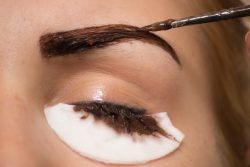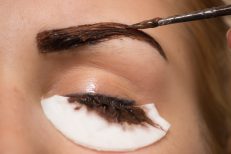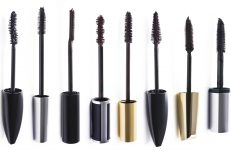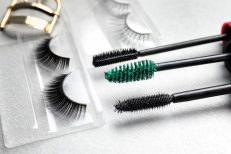How to tint your eyebrows and eyelashes? Henna tinting – in-salon or at-home?

Henna is a relatively cheap and safe way to darken your eyebrows or eyelashes for up to 3-4 weeks. It allows you to save 10 minutes a day usually spent on eyebrow and eyelash make-up. What is henna and how is it made? What are the contraindications to its use and how to apply it? Is it better to do it at home or in a salon?
What is henna?
Pure henna is a greenish powder without any colouring properties; it acquires them only thanks to acids and the right temperature. If you would like to prepare henna on your own, this is not an easy task as it requires mixing the powder with the right amount of lemon juice, essential oils, sugar, water and other ingredients.
Henna is made from dry leaves of Lawsonia (Lawsonia inermis) – a plant found in hot tropical forests. The amount of pigment in the plant increases with temperature. The leaves of Lawsonia contain a red dye called lawson, which combines with keratin present in hair and gives it a colour.
Henna tinting
Because of the fact that natural henna contains a dye with a red-brown colour, you can dye your hair, eyebrows and eyelashes only red-brown. Taking this into account, how is it possible that in stores we can buy henna in so many shades?
Such products are available in the form of a powder which needs to be mixed with hydrogen peroxide or in the form of a cream or gel. Before you make a decision which cosmetic to choose, check the composition. Pay special attention to dyes used for production. It may happen that instead of a natural product of plant origin, we find a highly sensitizing preparation containing artificial dyes.
By the addition of natural ingredients we can obtain different colours, for example, thanks to indigo we get a black colour. On the other hand, products containing black dye – Phenylenediamine (PPD) can be dangerous as PPD is a strong allergen.
Henna tinting in a beauty salon
Henna is one of the treatments available in most beauty salons, however, you can also do it yourself. In order to do it, you need to obtain a natural preparation or use a ready-made but do a patch test at least 24 hours before the planned dyeing. The most spectacular effect are visible on light eyebrows and eyelashes.
The patch test is an allergy test in which you apply a small amount of the product on a hidden fragment of the skin, for example, behind the ear or in the crock of the elbow. When henna dries, observe your skin for at least 24 hours. If no disturbing symptoms occur, you can tint your eyebrows and eyelashes.
How to choose the right colour? At the beginning it is better to give up dark shades, first check how well your hair take on the colour. It’s recommended to begin with a gel formula which is more delicate.
Henna tinting at home
Applying henna
Henna should be applied according to the instructions on the package. Make sure you keep henna out of your eyes. You can also protect your skin around your eyebrows or eyelashes by applying cream or petroleum jelly to the skin and putting a cotton pad on the lower eyelid.
After tinting, shave the hairs that are out of the contour (Note! Do not do this before applying henna!). Depending on the brand of the product leave henna on the eyebrows or eyelashes for 5-10 minutes, then wash it with a cotton pad soaked in warm water.
The effect should last about 3-4 weeks in the case of eyelashes and up to 2 weeks on eyebrows. Henna does not affect the condition of your hair, so you can repeat the treatment whenever you need it.
Removing henna
If your eyebrows are too dark after applying henna, you can use tint remover or a make-up remover to lighten them. However, it is a good idea to tint your eyebrows in a salon. This is a way to make sure your eyebrows or eyelashes are properly done. Along with tinting, you will have your eyebrows shaped in a proper way.
Henna tinting – contraindications
As it has been mentioned, henna is safe, but there are some contraindications to its usage. These include:
- recent epilation,
- wounds or cuts around eyebrows and eyelids,
- allergy to any of the ingredients of the product,
- redness or swelling of the eyelids,
- chalazia,
- inflammation of the eye.



